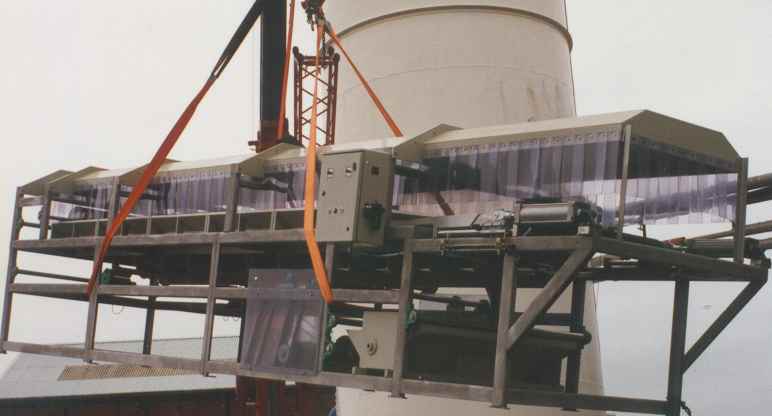At a stainless steel manufacturer, the steel is pickled in a mixture of hydrofluoric and hydrochloric acid. The spent acid and rinse waters are then treated in an effluent treatment plant which neutralises the acid and precipitates metal hydroxide sludge. Flocculent is added to this sludge to aid settlement, by gravity, in a conical base thickener vessel. The clear liquor overflow from the thickener is discharged to drain. Before installing in house sludge de watering the thickened sludge was removed at great expense, by road tankers for de-watering off site. The solution was to install a filter press which increases the 4% solids content sludge in the thickener to a 60% solids filter cake which is firm enough for landfill. The filter press operates on a 4-hour cycle and being a batch filter, it is filled from a sludge holding tank by means of a positive displacement pump. When the press, which holds 3.5 tons of solids, is full, an operator supervises the automatic cake discharge and then prepares the filter for the next batch. The payback period for the plant was less than 9 months.

A well known International Chemical Company
have an effluent treatment plant which incorporates continuous
neutralisation of spent acid from the various dyestuffs and
intermediate manufacturing plants which are operated on the site. The
spent acid is treated with milk of lime solution which, when reacted,
forms a gypsum slurry that requires de-watering. The slurry volume
can be in excess of 25m3 ( 6,875 US galls ) per hour, so batch type
pressure filters as above were unacceptable because of the heavy
labour and buffer storage requirement.
The solution -
a continuous vacuum belt filter which produces a cake with around 65%
solids content and a filtrate suitable for discharge into the local
sewer. The only labour requirement is the occasional check by a plant
operator to ensure that all is well. This particular filter has all
polypropylene wetted parts mounted on a grade 304 stainless steel
framework.
Truly a
case of fit and forget.
AJM / Polyfilters offer effluent reduction
solutions to companies manufacturing products as diverse as: printed
circuit boards, chemicals, carpets, roof tiles and dairy
products.
Other applications include building site run off
waters and lagoon clearance